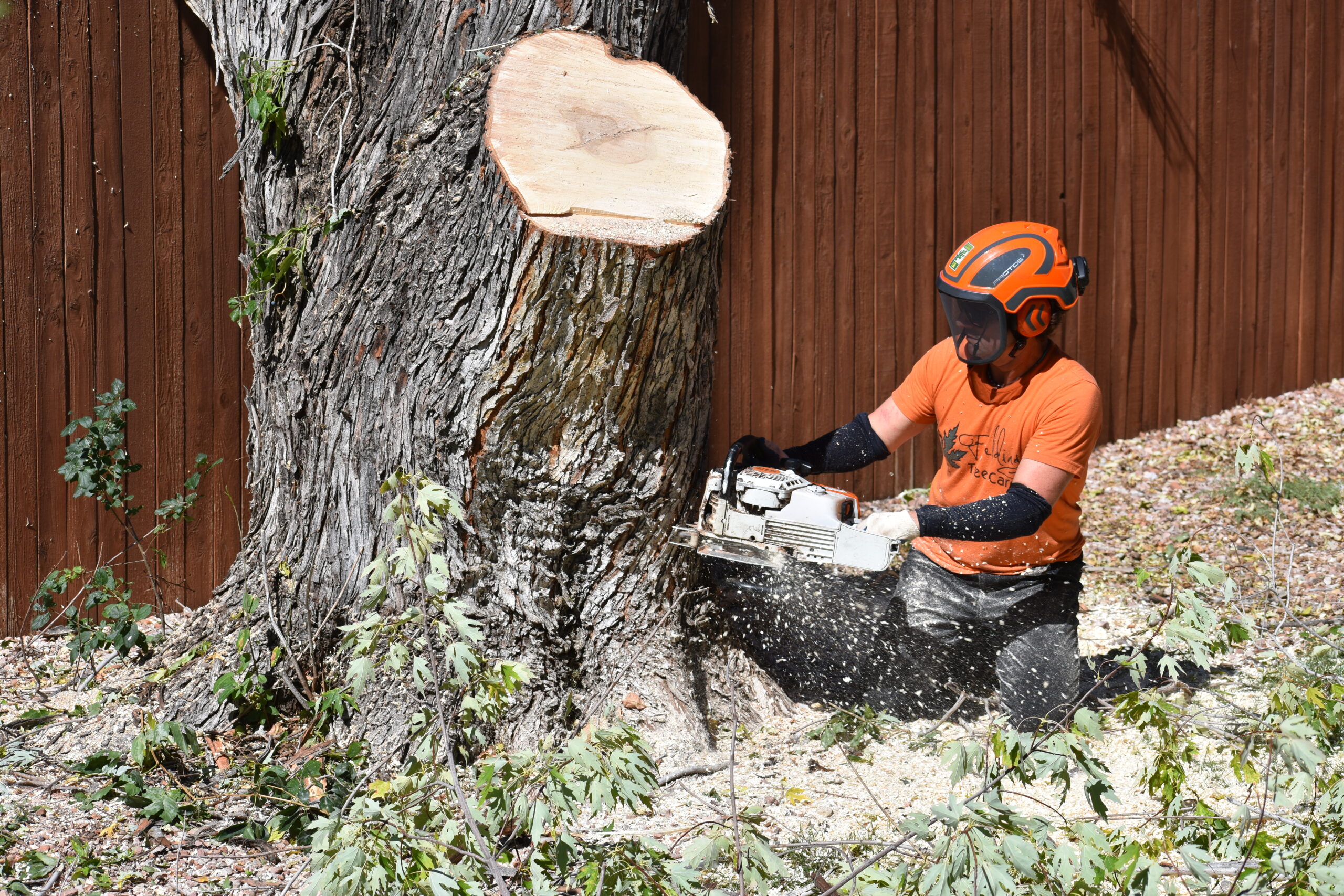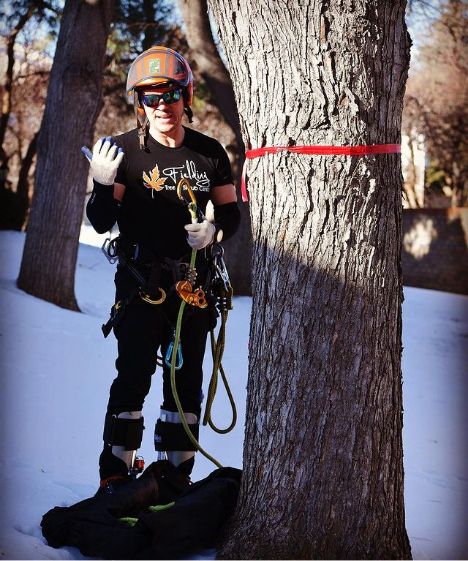Trees enhance the beauty and value of your property, providing shade and improving curb appeal. However, there are times when removing a tree is necessary due to disease, damage, or safety concerns. Tree removal is a complex task that requires professional expertise, specialized equipment, and careful planning. Understanding what affects pricing can help homeowners looking for affordable tree removal in Denver make informed decisions. In this blog, we’ll explore the factors that influence tree removal costs, what you can expect when hiring a professional, and why DIY tree removal is a risky option.
Average Cost of Tree Removal
The cost of tree removal can vary greatly based on several factors, including the region, company, and specific job details. It’s important to note that prices can fluctuate significantly depending on the tree’s size, health, location, and the complexity of the removal. This is why we recommend reaching out for a personalized quote rather than relying on generalized figures. Regional pricing differences and other variables will always affect the final cost.
Factors That Affect Tree Removal Costs
While tree size is a major factor, there are several other elements that can influence the final price of tree removal. Understanding these factors will help you make informed decisions and manage your budget effectively.
1. Tree Size and Height
The size and height of a tree are the most significant cost factors. Larger trees require more labor, equipment, and time to remove, leading to higher costs. Trees with multiple trunks or extensive root systems are more complicated to remove, adding to the expense.
2. Tree Health and Condition
A tree’s health and condition can also impact removal costs. Diseased, decaying, or dead trees may be easier to remove because the wood is softer, but they can also pose additional safety risks. If a tree is leaning or has structural issues, extra precautions such as using cranes or rigging may be necessary, driving up costs.
3. Location and Accessibility
The location of the tree on your property plays a crucial role in determining removal costs. Trees that are close to your home, power lines, or other structures require careful planning and specialized equipment to ensure safe removal. Difficult-to-access areas, such as trees in sloped yards or near fences, also add to the complexity and cost of the job.
4. Emergency Tree Removal
Emergency tree removal, such as after a storm when a tree is posing an immediate threat to your property, can significantly increase costs. Emergency removals often require immediate attention, specialized equipment, and careful planning to avoid further damage, which can push prices up to $5,000 or more. If a tree falls on your property, your homeowners’ insurance may cover part or all of the removal cost, so it’s important to check with your insurance provider before having any work done.
Insurance Coverage for Emergency Tree Removal
In cases where a tree poses an immediate danger to your property—such as after a storm—emergency tree removal services may be required. These services often come at a higher cost due to the urgency and specialized equipment needed. Fortunately, your homeowners’ insurance may cover part or all of the cost if the tree causes damage to your home or other insured structures. Here’s what to keep in mind:
- Covered Damage: If a tree falls due to a covered peril (e.g., wind, storm) and damages your home, your insurance likely covers removal and repairs. If no damage occurs, coverage is less likely.
- Coverage Limits: Insurance policies usually cap tree removal coverage with an overall limit for multiple trees. Asking your insurance provider about and understanding these limits helps manage expectations.
- Deductibles: Your policy’s deductible applies. If the removal cost is less than your deductible, you’ll need to cover the expense out of pocket.
- Proactive Maintenance: Keep records of tree maintenance to avoid denied claims due to neglect. If a tree was unhealthy or leaning before the storm, the insurer might deny the claim.
- Consult Your Insurer First: Before starting any emergency tree removal, consult your insurance provider to confirm coverage and necessary procedures. Some insurers may require an adjuster to assess the damage before removal begins, so acting too soon could impact your claim.
5. Additional Services
Tree removal may include additional services such as stump grinding or debris removal. While these services are optional, they are often recommended to keep your yard safe and clean after a tree has been removed. At Fielding Tree Care, debris removal and chipping are always included in our overall pricing, so you won’t see separate charges for these services. Stump grinding can also be arranged, depending on the tree’s location, size, and accessibility.
DIY Tree Removal: Is It Worth the Risk?
While removing a tree yourself may seem like a way to save money, it’s a dangerous and often costly mistake. Tree removal requires specialized equipment, training, and expertise to avoid injury or property damage. Here’s why it’s best to leave tree removal to the professionals:
- Safety Risks: Tree removal involves handling heavy equipment like chainsaws and working at dangerous heights. Without proper training, this can lead to severe injury or even death.
Property Damage: Improperly removing a tree can result in damage to your home, fencing, or other structures. Professionals have the experience to ensure the tree is removed without causing harm to your property.
Permits and Legal Issues: In some areas, removing a tree without the proper permits can result in fines. A certified tree removal company will handle the necessary permits and paperwork to ensure compliance with local regulations.
At any size, removing a tree can be risky. If the tree is located near power lines, it’s especially important to hire a professional. Attempting to remove trees yourself could result in fines, injury, or significant property damage.
How to Save on Tree Removal Costs
Tree removal is a significant investment, but there are ways to reduce costs without compromising safety or quality:
- Bundle Services: If you need multiple trees removed, some companies may offer discounts for bundling services.
- Off-Season Timing: Tree removal services tend to be in high demand during the spring and summer. Scheduling your removal during the fall or winter may result in lower prices.
- Prepare the Area: Clearing obstacles like fences, lawn furniture, or bird baths can make the job easier for the removal team, potentially reducing labor costs.
- Leave the Stump: If budget is a concern, consider leaving the stump intact and removing it at a later time when it’s more financially feasible. However, leaving stumps can attract pests and create hazards in your yard, which is why we encourage removal as soon as possible.
- Preventative Maintenance: The best way to save on tree removal costs is to keep your trees healthy and avoid removal altogether. Regular preventative care like pruning, fertilization, and assessments can help maintain tree health and address potential issues early, reducing the risk of damage or decline.
Conclusion: Investing in Safe Tree Removal
Tree removal is essential for maintaining the safety and health of your property. While costs can vary based on tree size, condition, and location, hiring a professional ensures the job is done safely, efficiently, and in compliance with local laws. At Fielding Tree Care, we specialize in professional tree removal services tailored to your needs. Whether you’re dealing with a diseased tree, storm damage, or need to improve your landscape, our team is here to help.
Want to know when your tree needs fertilization? Check our experts’ take here.






